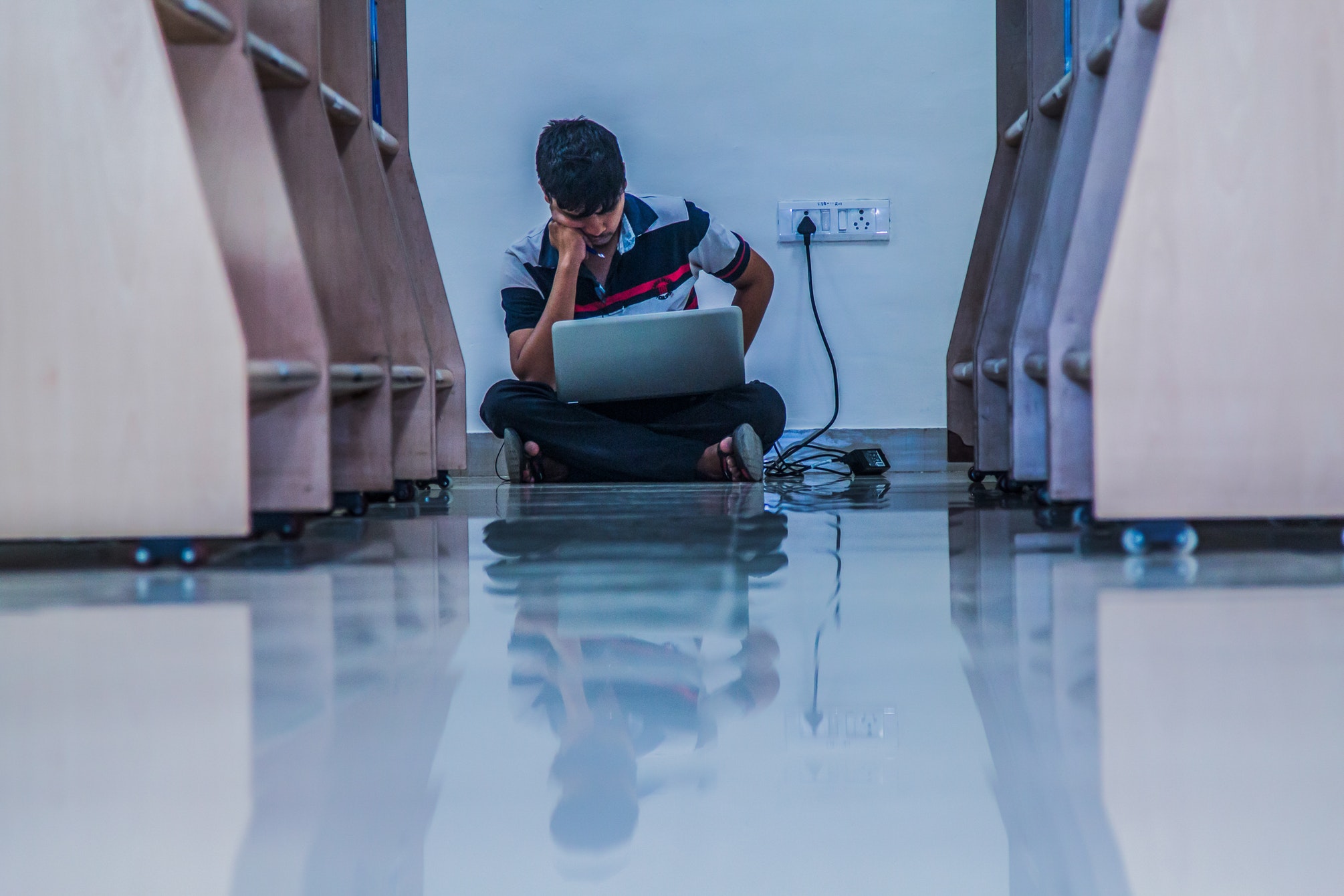Knowledge work requires concentration. To this end, universities have libraries in which one can focus on studying. In most of our companies there are no such zones for uninterrupted work. The credo there is teamwork and its highest value is communication. The results are working days that consist mostly of scheduled or spontaneous meetings with blocks of work in between that are too short for any meaningful in-depth work and are only used to respond to the flood of e‑mails accumulated during these meetings or that are more or less entertainingly wasted on the smartphone. All this in open-plan offices with noise levels that reduce any form of concentrated knowledge work to absurdity anyway or only make it tolerable through isolation with noise cancelling headphones.
When you’re operating on the maker’s schedule, meetings are a disaster. A single meeting can blow a whole afternoon, by breaking it into two pieces each too small to do anything hard in. Plus you have to remember to go to the meeting. That’s no problem for someone on the manager’s schedule. There’s always something coming on the next hour; the only question is what. But when someone on the maker’s schedule has a meeting, they have to think about it.
Paul Graham
Brian Donohue and his product engineering team had started an interesting experiment at Pinterest 100 days ago. Between Tuesday and Thursday no meetings were allowed. Following Paul Graham’s argument of the maker’s schedule, the goal was to create uninterrupted times for focused software development. The results Brian Donohue recently reported are impressive in their clarity, though not surprising: over 90% of developers said they have been more productive since then.
This experiment at Pinterest clearly shows that it is worth creating “species-appropriate” conditions for knowledge workers. However, meetings and especially those with far too many participants, boring PowerPoint battles and fruitless discussions of people with a narcissistic tendency are only one cause of disturbances. Inadequate office landscapes that are unilaterally designed for communication and collaboration are at least as great an evil.
Three to four hours a day, five days a week, of uninterrupted and carefully directed concentration, it turns out, can produce a lot of valuable output.
Cal Newport
Nothing wrong with communication and collaboration. But you need also space and time to work alone (or in pairs in the sense of pair programming) in a concentrated way. Unfortunately, neither the time is usually given by such rules as at Pinterest nor the space by suitable office landscapes with different zones. And so everyone has to create these working conditions for themselves somehow. “No Meeting” blocks in the calendar can help. Home office too, unless you have small children at home. Noise-cancelling headphones are also a very practical way of shutting yourself off in an open-plan office and showing that you don’t want to be disturbed. And maybe there is a quieter corner to work somewhere in the building, which is usually no problem thanks to a laptop and W‑LAN.
Some organizations haven’t realized this yet, or haven’t articulated it, but we need artists. Artists are people with a genius for finding a new answer, a new connection, or a new way of getting things done. That would be you.
Seth Godin
One more major source of distraction remains to be eliminated or minimized. As Niklas Göke shockingly observes, we use our smartphone every day for 2.5 hours on average. We can and should do something about this, because neither the manufacturers of the smartphones nor the providers of the apps and especially not the large platforms such as Facebook and Co. have an interest in us being less disturbed. On the contrary, they do everything to ensure that we pick up our smartphone as often as possible and spend as much time as possible with it. As described in Niklas Göke’s article, there are fortunately a few simple tricks and useful settings to counteract this and to turn the smartphone back into a useful tool that obeys our will without us succumbing too much to its seduction.





